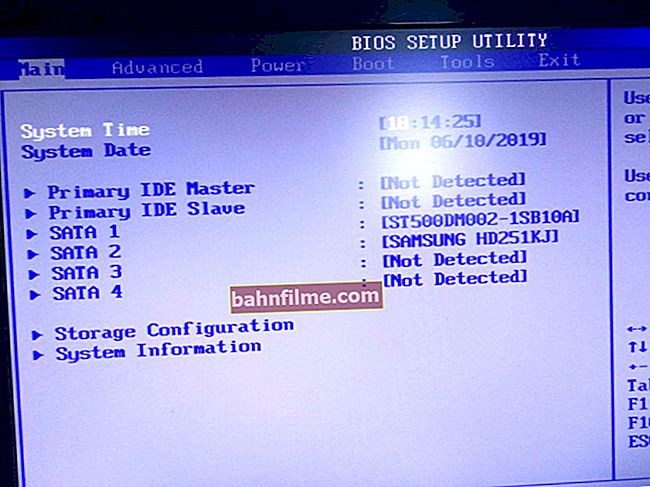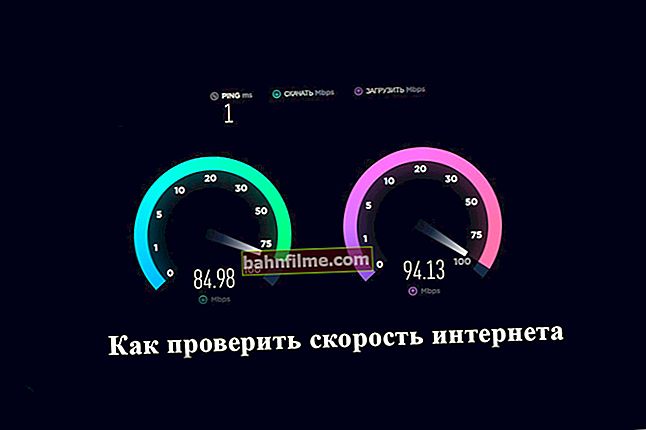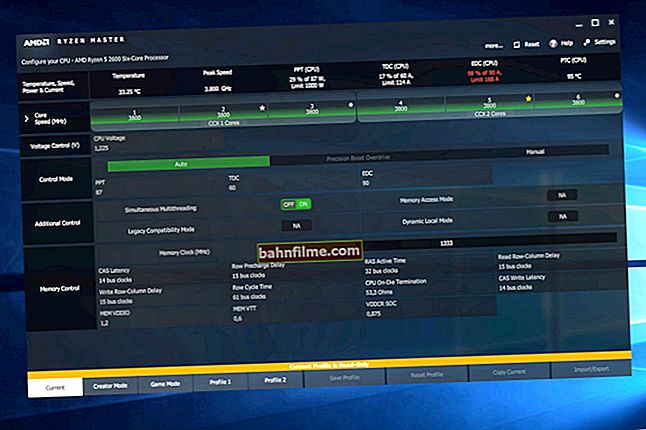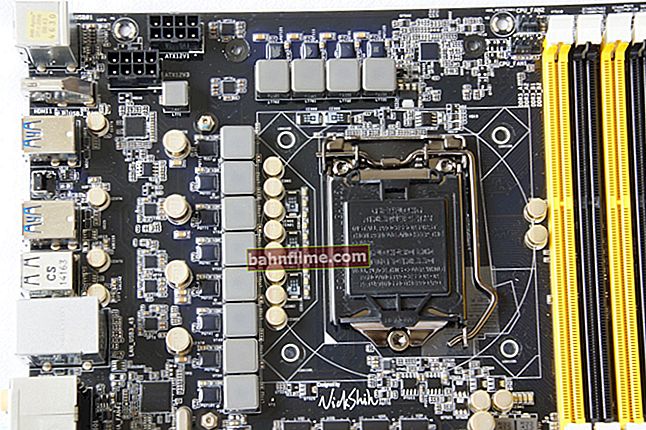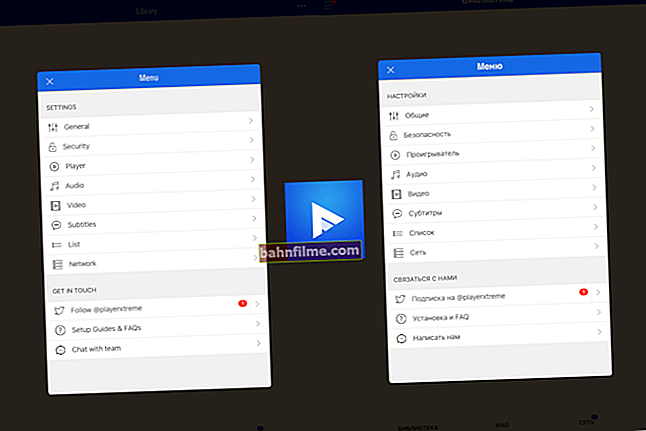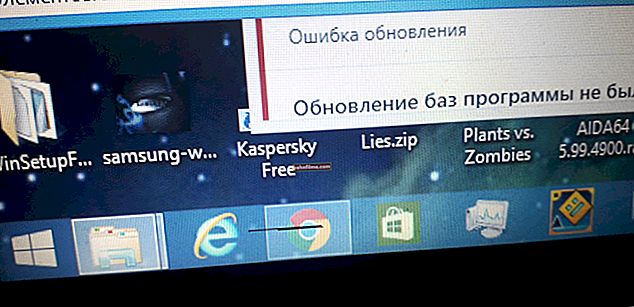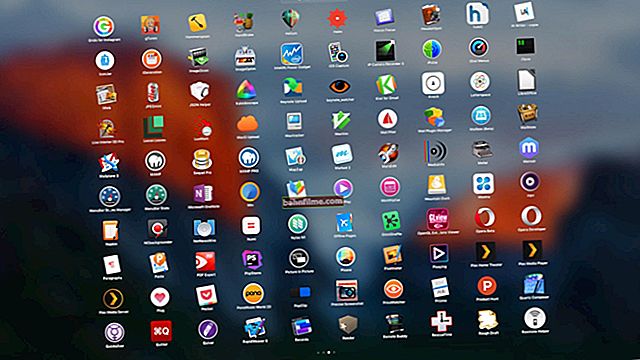 Good time everyone!
Good time everyone!
It would seem that archive Is a simple file that you can work with just like others. But there are always a lot of questions about them 👀 ...
In general, for the beginning of the "analysis", it is worth saying that archive Is a compressed file that can contain any other folders and files: pictures, documents, and even other archives (such is the tautology).
Before using any file from the archive, you need to extract it from it (although now there are programs that allow, for example, to view photos from archives without extracting them (talking about ACDSee)).
For normal work with archives (without the so-called crutches), you need a special program - archiver ... True, in modern versions of Windows there is already a built-in function (but to call it a normal archiver is not a matter of language).
Below consider what and how to do it specifically. Also below I have provided a link to an article with the best archivers. I recommend that you choose an archiver 7-Zip - it's free and feature rich. I will show my examples in it!
👉 To help!

WinRAR analogs: free archivers for Windows - my selection
*
Archive help: unpacking and packing 👌
How to unpack RAR, ZIP, etc.
Method # 1: for ZIP archives
If you are dealing with a ZIP archive, then you do not even need to install an additional archiver (in modern Windows 7/8/10 OS there is already a function for working with the ZIP format. True, although it works crookedly, it still has ...).
In general, by default, Explorer does not show the extension for files, but pay attention to the archive icon in Windows - (and the description of the file is a compressed ZIP folder, in the column "A type" (enable table view of files in explorer)).
(and the description of the file is a compressed ZIP folder, in the column "A type" (enable table view of files in explorer)).
This compressed ZIP folder, as Windows labels it, is the ZIP archive. To extract it, you need to: right-click on the file, then select "Extract all ..." (see screenshot below).

Tools for extracting data from a ZIP folder
Next, you will need to specify the path where to extract the file and start the operation. Actually, after extraction, you can use it. It's that simple!

Unpacking compressed zip folders
♦
Method number 2: for RAR, 7Z and other formats
As I said above, it is much more convenient to work with specialized programs - archivers.
First, they extract and pack files faster (they have better algorithms); secondly, they see and can extract almost all archive formats (not just ZIP); thirdly, they have additional functions, for example, to split a too large archive into small ones, or to set a password (so that no one can read your files in the archive).
7-ZIP
Website: //www.7-zip.org/

Simple, free and convenient archiver for Windows. After installation, it is very neatly embedded in the explorer and allows you to extract all data from any of the most common archives in 1-2 clicks: 7Z, RAR, GZ, ZIP, CAB, ACE, etc.
We will assume that you have this archiver. ✌...
Now, going into the folder with the archives, you will see that new visual icons have appeared on them - it has become easy to distinguish them from other files (note the numbers and letters on these icons: "7" is the 7Z format, "R" is the RAR format, "Z" is the ZIP format) .
To extract files, just right-click on the archive, then select "7-Zip -> Unpack here" ... And that's it! The archive will start to be extracted.
Note: other options are also available in the explorer context menu: just open the archive, test it, or even send it by mail!

7-Zip - Unzip Here!
*
How to zip a folder or file
So ... The issue of unpacking, I think, is closed, it remains to solve the issue of "packing" 👀.
In general, most often you need to pack files that you want to send over the network, which take up too much disk space on your disk (and you rarely use them), or which you want to protect with a password (so that no one can read the data in such an archive). I will consider all these options below.
In the simplest and most common case, in order to make an archive from a folder or file, right-click on this folder and select "7-Zip -> Add to archive ..."(note: I believe you have 7-Zip installed) .

7-Zip - Add to Archive (Windows Explorer)
Next, you must specify:
- archive format: it depends on how much your files will be compressed in it. The most optimal option for today is 7Z (compresses more strongly than ZIP or RAR);
- compression level: the highest level is "Ultra" (if there are a lot of files, it may take a long time to compress).
Actually, when the parameters were set, it remains to click on OK and wait for the end of the operation.

Add to archive (basic settings must be specified)
♦
Creating a multivolume archive (or splitting a large file into parts)
In some cases, it is necessary to compress the file and burn it to a USB flash drive or CD / DVD disc (for example). When they squeezed, they saw that it did not "fit" on the disc ☝ ...
In these cases, it is convenient to create a multivolume archive (i.e. split into several parts with a certain size). Consider the example below.
Let's say we have a folder with documents, it needs to be compressed and written to floppy disks (3.5 Floppy is an anachronism, of course, but purely for example ☺). If you compress a folder into an archive, then its size is still larger than the size of a floppy disk.

Archive size about 3MB
In this case, in the parameters when creating an archive, you need to do one thing - indicate which parts to split the volume into (the size is indicated in bytes). 7-Zip already has all the most popular:
- there are sizes of 650 and 700 MB for writing documents to CDs;
- 4092 MB is the maximum size for the FAT 32 file system;
- there are sizes for different types of DVD discs;
- including those for Floppy 3.5 (which I chose ☺).

Choosing which parts to split the archive into
Pay attention (see the screen below): there are three files, the maximum size of each file is no more than the size of a floppy disk. Those. now you can insert 3 floppy disks one by one, and write to them one file at a time.
To extract information from such an archive, you need to open the very first volume (001)! And by the way, to extract files from such a multivolume archive, you will need all volumes (all the pieces into which the archive was split during creation!).

Unpacking a multivolume archive
♦
Creating an encrypted archive (with password access)
This is useful in the case when you do not want your documents (or, for example, a photo) to be seen by someone without your permission. By the way, I note that such an encrypted archive file with password access is quite difficult to crack, and therefore you can be relatively calm about your data in it.
In 7-Zip, when creating an archive, specify the 7Z format, then check the box next to the item "Encrypt file names" , specify the encryption method "AES-256" , and enter the password (see the screenshot below shows an example).

Create an encrypted password archive
Actually, after creating such an archive, when you try to open it (in any archiver!) - you will see a window asking you to enter a password. If it is entered incorrectly, you will not get access to your data (keep in mind, if you forget your password, it will most likely be impossible to get data from such an archive!).

Now you can't even see the filenames until the password is entered
👉 To help!

By the way, about protecting files, folders and flash drives with a password, I have another article on my blog, I recommend it.
♦
How to make an archive that can be unpacked without an archiver
Another extremely unpleasant situation: I packed the files into an archive, wrote them to a disk, brought them to another PC - and there is no archiver on it that would support the format of your archive ... 👀
In this case, to be sure that this archive can be extracted by everyone who wants to, you can create SFX archive (SFX is self-extracting, i.e.no additional programs are needed to unpack it, not even archivers).
To do it, in 7-Zip, when creating an archive, check only one checkbox: "Create SFX archive" .

Create a self-extracting archive
Then, when the archive is ready, you will see that it resembles a regular program with the EXE extension. So it is - this archive is the program that, when launched, will extract all files from itself to the folder that you specify!

Almost like a regular program ...
After launching the SFX archive, you will be prompted to specify the folder, as in the example below. After the instruction, click the button "Extract" (i.e. retrieve). Actually, that's all!

Where to extract files // SFX archive created in 7-Zip
Important!
All three versions of archives that we have created now (multivolume, self-extracting, encrypted) can be combined and combined. For example, you can compress files and make the archive self-extracting with password access.
Thus, when someone launches this EXE file, he will ask him to provide a password for further access and extraction of files ...
*
That's all for now ...
Good luck to all!
👋
First published: 12/18/2017
Correction: 02/10/2020
